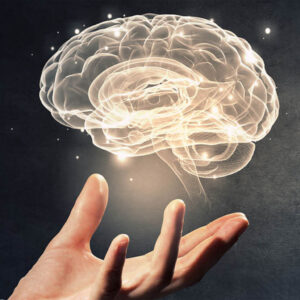How Does Social Anxiety Affect the Brain?
For people with social anxiety disorder (SAD), everyday social interactions can be a source of significant stress and fear. But what exactly is happening in the brain to cause these intense feelings of anxiety?
Research has shown that social anxiety disorder is associated with a combination of genetic, environmental, and brain factors. Brain imaging studies have identified several key regions and neurotransmitters that play a role in SAD, helping us understand the biological basis of this disorder.
Key Brain Regions Involved in Social Anxiety
Amygdala
One important area is the amygdala, almond-shaped structures located deep within the temporal lobes of the brain. The amygdala is responsible for processing emotions, particularly fear and anxiety. In people with SAD, the amygdala tends to be hyperactive, meaning it responds more strongly to potential threats or negative stimuli. This heightened response may contribute to the excessive worry and fear of negative evaluation often seen in social anxiety.
Prefrontal Cortex
Another crucial region is the prefrontal cortex, which is involved in higher-level executive functions such as decision-making, social behavior, and emotional regulation. In individuals with SAD, this area may show reduced activity, particularly when engaging in social tasks or processing social information. This decreased activity could impair the ability to regulate emotions effectively during social situations, leading to feelings of anxiety and self-consciousness.
Neurotransmitters and Their Role
Neurotransmitters, the chemical messengers of the brain, also play a significant role in SAD.
Serotonin
Serotonin, a neurotransmitter involved in mood regulation, is believed to be important in SAD. Many selective serotonin reuptake inhibitors (SSRIs), which increase serotonin levels in the brain, are commonly used to treat this disorder.
Dopamine
Dopamine, a neurotransmitter involved in reward and motivation, may also be implicated in SAD. Some studies suggest that people with SAD may have reduced dopamine activity, particularly when anticipating or receiving social feedback.
Interplay Between Brain Regions and Neurotransmitters
The complex interplay between these brain regions and neurotransmitters contributes to the development and maintenance of SAD. For example, when faced with a social situation, the hyperactive amygdala may trigger a fear response, while a less active prefrontal cortex might struggle to regulate this emotion effectively. This combination could result in the intense anxiety and self-consciousness characteristic of SAD.
Structural Changes in the Brain
Functional and structural changes in the brain may also occur as a result of SAD. Some studies suggest that people with SAD may have reduced gray matter volume in certain regions, including the amygdala and prefrontal cortex. This could indicate that the disorder may, over time, physically alter the brain. However, it is unclear whether these changes are a cause or consequence of the disorder.
Treatment and Management
While we continue to unravel the mysteries of the brain, one thing is certain: social anxiety disorder is a real and treatable condition. Understanding the biological basis of SAD not only helps reduce stigma but also guides the development of more effective therapies to help those affected manage their anxiety and lead fulfilling social lives.

Cognitive-Behavioral Therapy (CBT)
Cognitive-behavioral therapy (CBT) is a common and effective treatment for SAD. It helps individuals identify and challenge negative thought patterns and behaviors associated with social anxiety, replacing them with more positive and realistic ones.
Medication
Medications, such as SSRIs and benzodiazepines, can also be used to manage symptoms of social anxiety. These medications help regulate neurotransmitter levels in the brain, reducing anxiety and improving mood.
The Importance of Early Intervention
For individuals living with SAD, it is crucial to seek professional help, as early intervention can improve long-term outcomes. With the right support and tools, those affected by SAD can learn to manage their anxiety and lead fulfilling social lives.
Resources and Support
If you or someone you know is struggling with social anxiety, various resources are available to help. Reach out to a mental health professional or a support organization, such as the National Alliance on Mental Illness (NAMI) or the Anxiety and Depression Association of America (ADAA). Taking that first step toward seeking help can be life-changing, leading to greater self-understanding, improved coping strategies, and a renewed sense of hope.
In summary, understanding how social anxiety affects the brain is crucial in developing effective treatments and support systems for those affected. By continuing to explore the biological underpinnings of SAD and promoting a culture of acceptance and support, we can help individuals overcome social anxiety and lead fulfilling, socially engaged lives.
For people with social anxiety disorder, everyday social interactions can be a source of significant stress and fear. But what exactly is happening in the brain to cause these intense feelings of anxiety?
Research has shown that social anxiety disorder (SAD) is associated with a combination of genetic, environmental, and brain factors. Brain imaging studies have identified several key regions and neurotransmitters that play a role in SAD, helping us understand the biological basis of this disorder.
One important area is the amygdala, almond-shaped structures located deep within the temporal lobes of the brain. The amygdala is responsible for processing emotions, particularly fear and anxiety. In people with SAD, the amygdala tends to be hyperactive, meaning it responds more strongly to potential threats or negative stimuli. This heightened response may contribute to the excessive worry and fear of negative evaluation often seen in social anxiety.
Another crucial region is the prefrontal cortex, which is involved in higher-level executive functions such as decision-making, social behavior, and emotional regulation. In individuals with SAD, this area may show reduced activity, particularly when engaging in social tasks or processing social information. This decreased activity could impair the ability to regulate emotions effectively during social situations, leading to feelings of anxiety and self-consciousness.
Neurotransmitters, the chemical messengers of the brain, also play a significant role in SAD. Serotonin, a neurotransmitter involved in mood regulation, is believed to be important in SAD. Many selective serotonin reuptake inhibitors (SSRIs), which increase serotonin levels in the brain, are commonly used to treat this disorder. Additionally, dopamine, a neurotransmitter involved in reward and motivation, may also be implicated in SAD. Some studies suggest that people with SAD may have reduced dopamine activity, particularly when anticipating or receiving social feedback.
The complex interplay between these brain regions and neurotransmitters contributes to the development and maintenance of SAD. For example, when faced with a social situation, the hyperactive amygdala may trigger a fear response, while a less active prefrontal cortex might struggle to regulate this emotion effectively. This combination could result in the intense anxiety and self-consciousness characteristic of SAD.
Furthermore, functional and structural changes in the brain may also occur as a result of SAD. Some studies suggest that people with SAD may have reduced gray matter volume in certain regions, including the amygdala and prefrontal cortex. This could indicate that the disorder may, over time, physically alter the brain. However, it is unclear whether these changes are a cause or consequence of the disorder.
While we continue to unravel the mysteries of the brain, one thing is certain: social anxiety disorder is a real and treatable condition. Understanding the biological basis of SAD not only helps reduce stigma but also guides the development of more effective therapies to help those affected manage their anxiety and lead fulfilling social lives.
With ongoing research, we can hope to further enhance our comprehension of SAD, leading to improved diagnosis and treatment methods that offer relief to those struggling with this disorder. As we gain a better grasp of the intricate brain mechanisms underlying social anxiety, we move closer to providing effective tools for individuals to overcome their fears and engage with the world confidently.
The impact of social anxiety disorder on an individual’s life can be profound, affecting their ability to form relationships, perform at work or school, and engage in everyday activities. However, with proper treatment, which may include medication and therapy, many people with SAD can manage their symptoms and improve their quality of life.
In conclusion, social anxiety disorder is a complex condition that involves multiple brain regions and neurotransmitters. While we have made significant progress in understanding the biological basis of SAD, much remains to be discovered. By continuing to explore the intricate workings of the brain, we can develop more effective strategies to help those struggling with social anxiety break free from its grasp and embrace a life of social confidence and fulfillment.
For individuals living with SAD, it is crucial to seek professional help, as early intervention can improve long-term outcomes. Treatment typically involves a combination of therapy, such as cognitive-behavioral therapy (CBT), and medication, if necessary. With the right support and tools, those affected by SAD can learn to manage their anxiety and lead fulfilling social lives.
If you or someone you know is struggling with social anxiety, various resources are available to help. Reach out to a mental health professional or a support organization, such as the National Alliance on Mental Illness (NAMI) or the Anxiety and Depression Association of America (ADAA). Taking that first step toward seeking help can be life-changing, leading to greater self-understanding, improved coping strategies, and a renewed sense of hope.
Together, we can raise awareness, offer support, and provide effective treatment options to help individuals overcome social anxiety and embrace a brighter, more socially engaged future. With the right assistance, a life of increased confidence, improved relationships, and greater overall well-being is well within reach.
Conclusion
Social anxiety disorder is a complex condition that involves multiple brain regions and neurotransmitters. While we have made significant progress in understanding the biological basis of SAD, much remains to be discovered. By continuing to explore the intricate workings of the brain, we can develop more effective strategies to help those struggling with social anxiety break free from its grasp and embrace a life of social confidence and fulfillment.
Together, we can raise awareness, offer support, and provide effective treatment options to help individuals overcome social anxiety and embrace a brighter, more socially engaged future. With the right assistance, a life of increased confidence, improved relationships, and greater overall well-being is well within reach.
Ongoing Research and Future Directions
With ongoing research, we can hope to further enhance our comprehension of SAD, leading to improved diagnosis and treatment methods that offer relief to those struggling with this disorder. As we gain a better grasp of the intricate brain mechanisms underlying social anxiety, we move closer to providing effective tools for individuals to overcome their fears and engage with the world confidently.
The Role of Advocacy and Education
Advocacy and education are crucial in addressing social anxiety disorder. By raising awareness about the condition and its impact on individuals’ lives, we can reduce stigma and encourage more people to seek help. Educating the public about the biological basis of SAD can also foster greater understanding and empathy towards those affected.
Encouraging a Supportive Environment
Creating a supportive environment for individuals with social anxiety is essential. This includes fostering a culture of acceptance and understanding, where people feel comfortable discussing their struggles without fear of judgment. It also involves providing access to resources and support networks that can help individuals manage their anxiety and improve their quality of life.
















